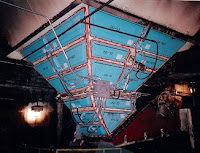Fully automatic units are supplied with a 4-20 mA controlled actuator that regulates gas. The control system includes a power-on switch, power-on light, master controller with 4-20mA slave controller, air-on light, gas-on light, ignition-firing light, burner-on light, high-fire light and high-fire switch. Should the limit switch fail system come with a dump button and procedure for clearing the gas out of the lines. Construction is 1.5 inch powered coated tubing.
Other features include:
For more information. contact:
Hotfoil-EHS, Inc.
2960 East State Street Ext.
Hamilton, NJ 08619
Phone # 609.588.0900
Fax # 609.588.8333
www.hotfoilehs.com
Email: dap@hotfoilehs.com
- 15HP blower motor than can move up to 2200 cubic feet/minute
- Damper with a handle wheel for adjustment
- Blower is powder coated for longevity
- Starter box incorporates a lockable disconnect
- Supplementary circuit breaker
- Starter contactor
- 750VA transformer 480/120 for power to the train.
For more information. contact:
Hotfoil-EHS, Inc.
2960 East State Street Ext.
Hamilton, NJ 08619
Phone # 609.588.0900
Fax # 609.588.8333
www.hotfoilehs.com
Email: dap@hotfoilehs.com






